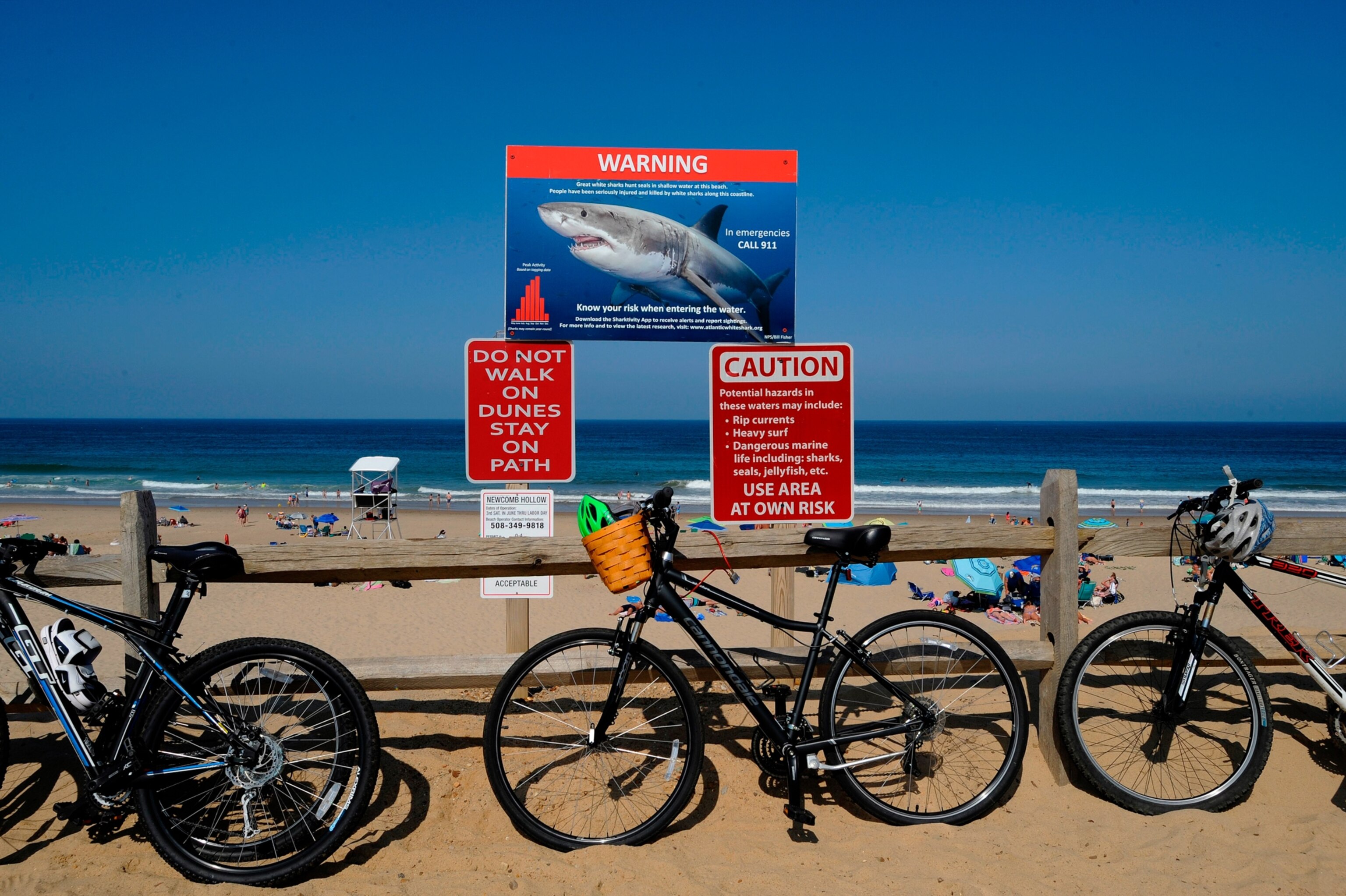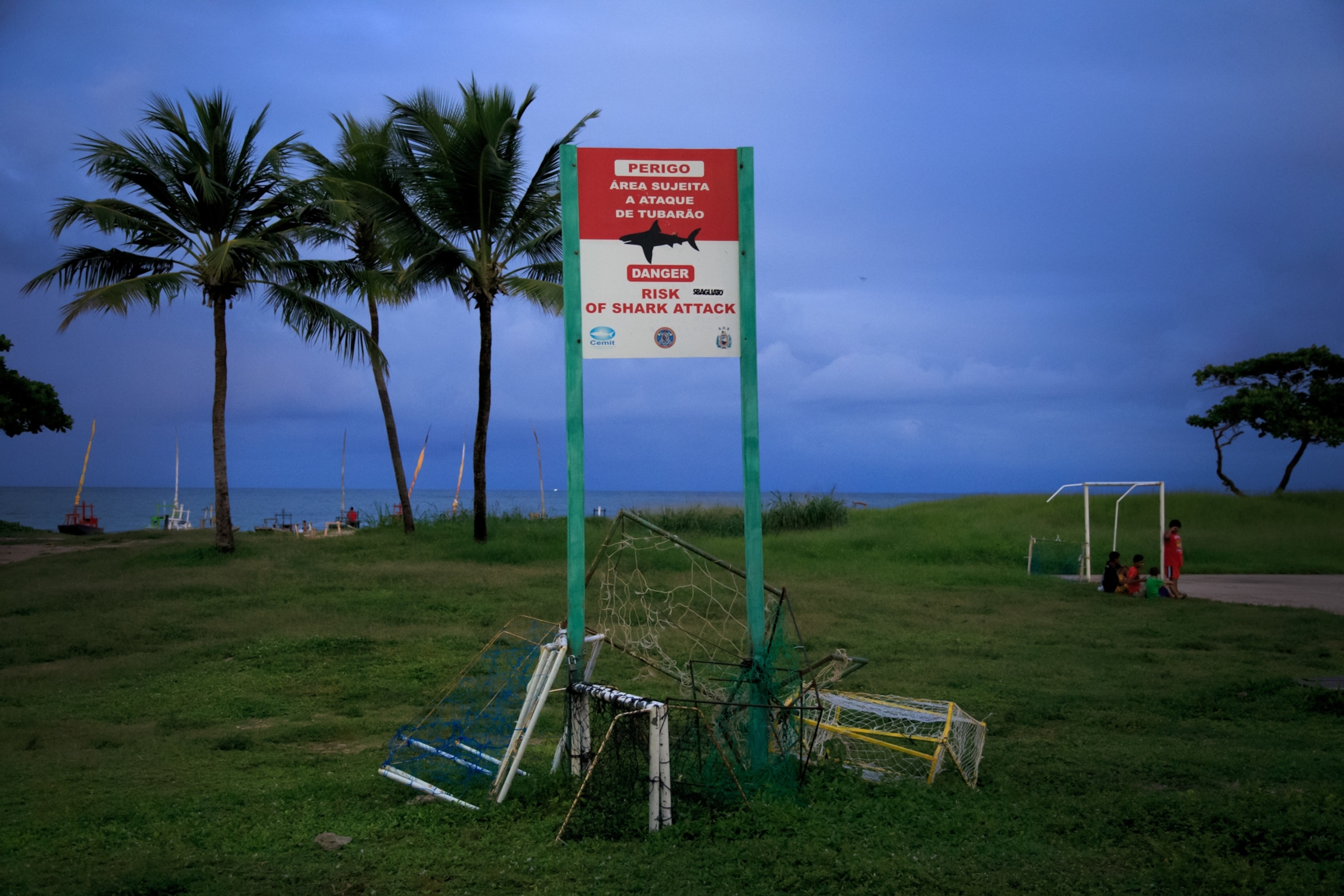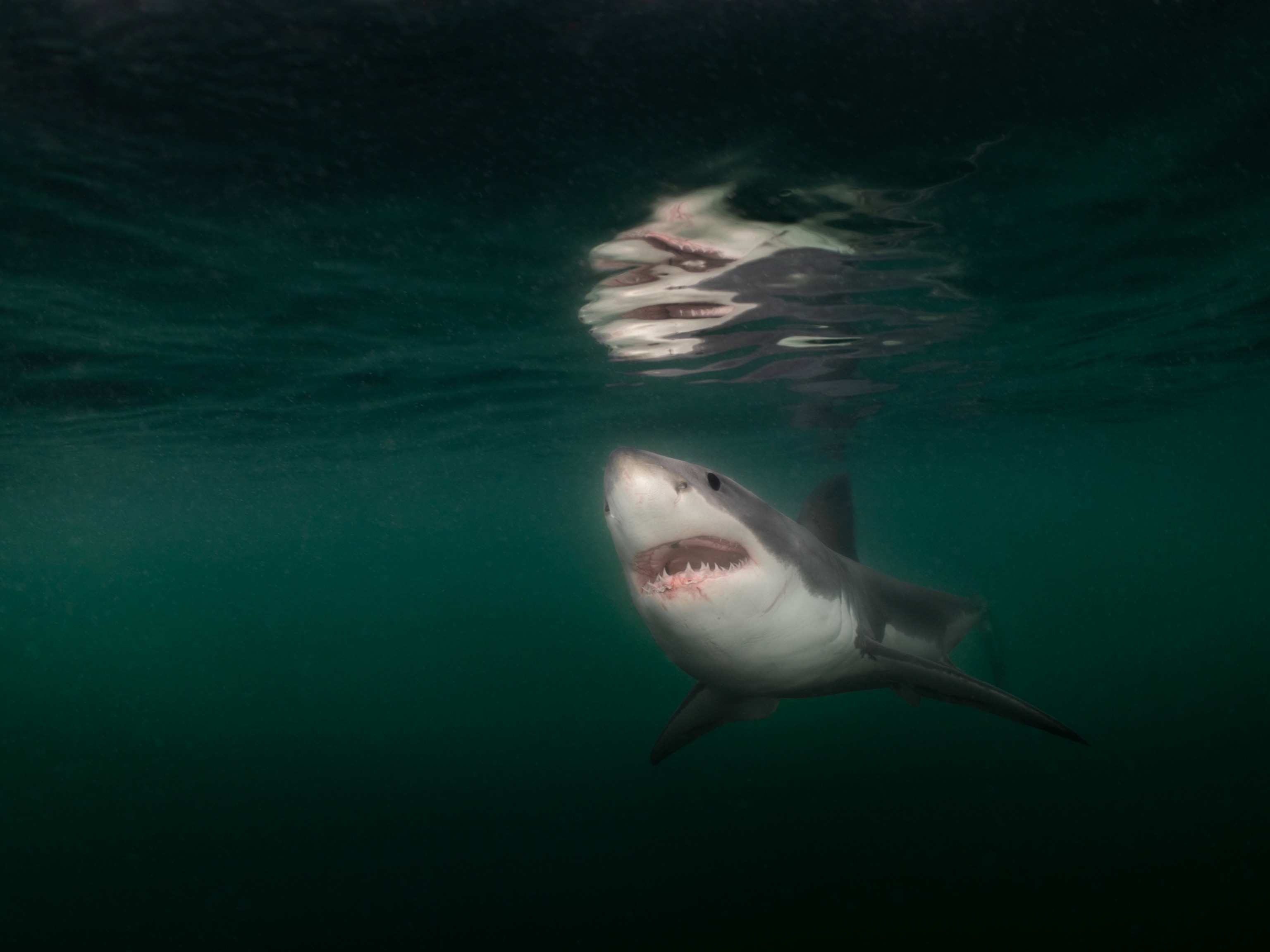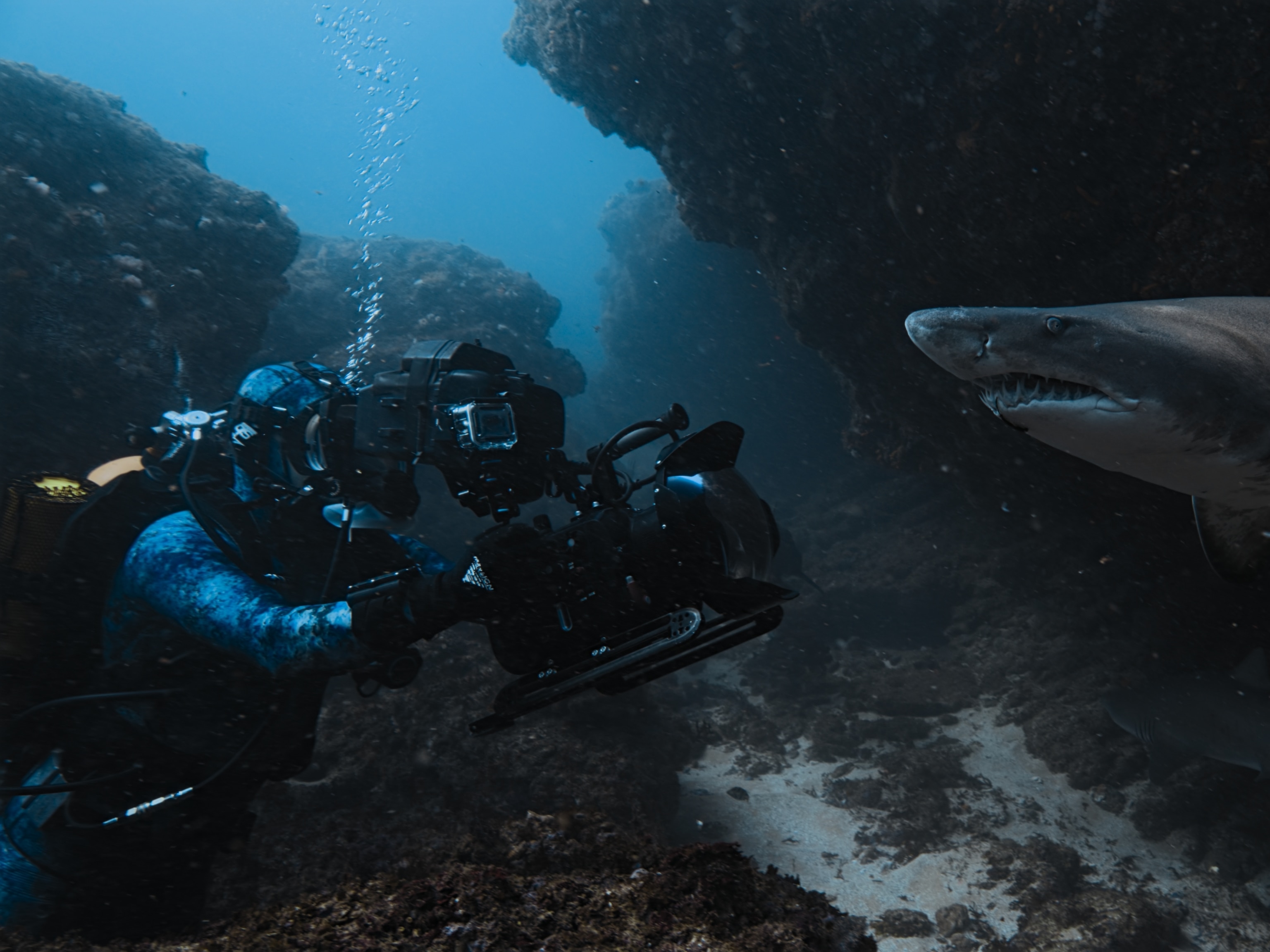Plymouth, Massachusetts — “CAUTION!” “WARNING!” “SEVERE BLEEDING!” Those are just a few of the alarming signs that beachgoers encounter as they lug coolers and umbrellas through the dunes and onto the beaches of Cape Cod, Massachusetts, one of America’s most famous seashores.
The bright-red capital letters, plastered alongside photographs of toothy sharks, are meant to warn people that sightings of great white sharks have increased along the New England coast in recent years. So far in summer 2021, citizen scientists have reported 50 great whites off Cape Cod alone.
The predators, which can grow up to 18 feet long, are attracted to gray seals, a species that has bounced back along the U.S. East Coast since the U.S. Marine Mammal Protection Act banned hunting of the species in 1972.
The recovery of shark prey species, coupled with an increase in beach tourism worldwide, are fueling a gradual rise in shark bites around the globe, from about 157 incidents reported between 1970 and 1979 to 799 between 2010 and 2019, according to data collected by the International Shark Attack File, a database run by the Florida Museum of Natural History. Between 2015 and 2019, there was a global average of about 80 shark bites each year, but the number dropped in 2020 to 57 bites, perhaps related to quarantine restrictions during the pandemic.
As in past years, the U.S. in 2020 experienced the most shark bites, with 33, followed by 18 in Australia. In Cape Cod, one of the hot spots for U.S. shark activity, great white sharks have bitten five people since 2012, including one person who died.
Even still, shark encounters are extremely rare, and when they do happen, sharks almost always bite people by mistake, thinking they’re a seal or another prey. (Learn why great whites are still a mystery to us.)
Of course, swimming is riskier if you’re sharing the waters with a shark’s natural food source. Cape Cod and Cape Town, South Africa, are “the only two places in the world where you have a high density of people, seals, and great white sharks” swimming together close to shore, says Christopher Pepin-Neff, a social scientist at the University of Sydney who studies how sharks are perceived by the public.
You’re going to need a bigger screen. Tune in to the biggest SharkFest ever, spanning six weeks and airing across four networks and Disney+.
The vast majority of the world’s 500 shark species, from the largetooth sawfish to the glowing deep-sea shark, are harmless to humans, yet their populations have plummeted in recent decades due to overfishing. Sharks are both harvested for their fins, which is eaten in shark fin soup, and accidentally caught in fishing lines meant for other animals. Recent studies show that numbers of open-ocean sharks and rays have fallen by 71 percent since 1970, while reef sharks are in major freefall worldwide; in some cases, they’re completely absent from their namesake coral reefs. To stem the decline, conservationists have created marine protected sanctuaries where fishing is banned, and have launched programs to educate the public on how best to share the oceans with sharks.

Though shark bites generate a lot of press, only three shark species pose a danger to humans: great whites, tiger sharks, and bull sharks. That’s why many coastal cities whose shores are home to these three species rely on signs as a first line of defense to communicate risks to the public.
Yet it’s an open question whether such messaging is truly effective in reducing human conflicts with sharks, experts say. Observations of swimmers’ behavior in areas with sharks suggest that many people ignore the signs. “If you fly the danger flag every day all day, everybody ignores the danger flag,” says Pepin-Neff.
A 2013 research study focusing on four Australian beaches found that beach warning signs are largely ineffective, with 55 percent of beach visitors not noticing them. Especially if you're new to the beach, "there’s so much stimuli you might never notice the signs,” Pepin-Neff says.
But Sarah Waries, CEO of Shark Spotters in Cape Town, a beach-safety program, asserts such messaging is a necessary public service.
“Municipalities have an obligation to warn people about potential risks in the area and how to avoid them,” by doing things such as swimming close to shore in groups, says Waries.
Ignoring the (shark) signs
“We work under the assumption that sharks are always present,” says Nathan Sears, natural resource manager for the town of Orleans on Cape Cod. “Our signs are accurate and direct because we find that people can become complacent. They start to ignore the signs’ message and begin to get careless.”
But Sears acknowledges that sometimes even the bluntest of signs aren’t enough to convince people to stay out of the water during times of high shark activity.
To strengthen the public safety campaign on South Africa’s beaches, the Shark Spotter program uses a colored flag system to notify people when there is a high likelihood of sharks (red flag) and when there is a great white shark confirmed in the swimming area (white flag). (Learn why shark bites are more common in the Atlantic.)
Yet a 2017 study found that swimmers, surfers, and paddlers didn’t exit the water until after Shark Spotters flew a white flag, sounded the alarm, and actively cleared the swimming area.
In contrast, no one exited the water when the red warning flag was flown. “We’re
providing the information and people aren’t absorbing it,” Waries says.
Building a narrative
Communicating risks to the public is particularly challenging due to conflicting messages, such as that the notions that while risk of an encounter is low, you should still be very careful, Waries says.
One solution might be to streamline shark-warning messages by crafting a story with a main character, plot, conflict, and resolution, a more engaging approach that has some scientific backing.
For instance, the U.S. Forest Service’s Smokey Bear cartoon character successfully inspired people to prevent forest fires since 1944. The Ad Council and U.S. Forest Service credit the Smokey Bear campaign with reducing human-caused fires in the US by 62 percent, as determined by the acreage accidentally burned before and after the campaign launched.
“As a kid I grew up reading Ranger Rick, and there was an entire campaign around Woodsy Owl,” which encouraged kids to enjoy the outdoors responsibly, recalls Brian Carlstrom, superintendent of Cape Cod National Seashore. “Those are things that definitely stick in my head.”
Carlstrom says municipalities or government agencies should create an endearing cartoon of a great white shark to bolster awareness of safe swimming practices. “Kids identify with that,” he says.
Appreciating sharks
Sharks have gotten a publicity boost in recent years, as emerging research shifts the narrative from a senseless killer to an animal that can form friendships and live up to 200 years. (Learn about the most fascinating shark discoveries of the past decade.)
In an effort to better the public’s understanding of how sharks behave, shark researchers at a recent conference suggested replacing the term “shark attacks” with “shark bites,” or more broadly, “shark encounters,” the Sydney Morning Herald reported. For instance, up to a third of shark run-ins don’t cause injury, such as when a person steps on a small, bottom-dwelling shark, the paper said.
On Cape Cod, the Atlantic Shark Center, a museum run by the Atlantic White Shark Conservancy, has seen an increase of about 3,000 visitors each year since their opening in 2016 (with the exception of 2020, because of decreased tourism during the pandemic), says Marianne Long, the conservancy’s education director.
“The number one question that we get when people come in to see us is, What beach do I have to go to to see a shark?” adds Long.
In Cape Town, fewer great whites have been seen near popular swimming beaches in recent years, likely because of orcas preying on white sharks, a recently discovered phenomenon. “We were really surprised that people were genuinely concerned about why,” says Waries.
Building on that curiosity about sharks by engaging people with a narrative, experts say, may be exactly what we need to both communicate the risks and safely share our oceans with these impressive animals.








